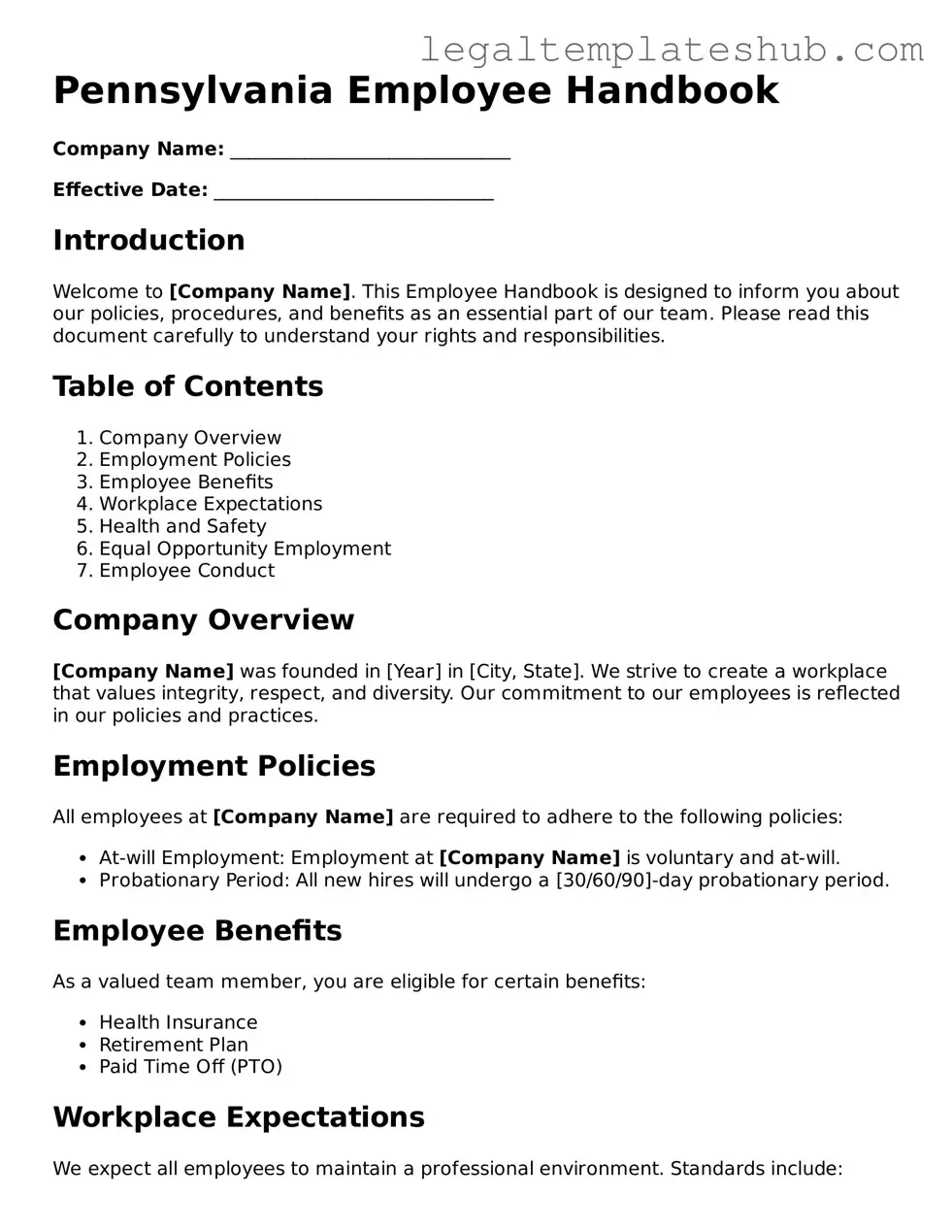Printable Employee Handbook Document for Pennsylvania
The Pennsylvania Employee Handbook form is a crucial document that outlines the rights and responsibilities of both employers and employees within the state. This form serves as a guide to workplace policies, procedures, and expectations, ensuring clarity and compliance. To get started on creating your handbook, fill out the form by clicking the button below.
Access Editor
